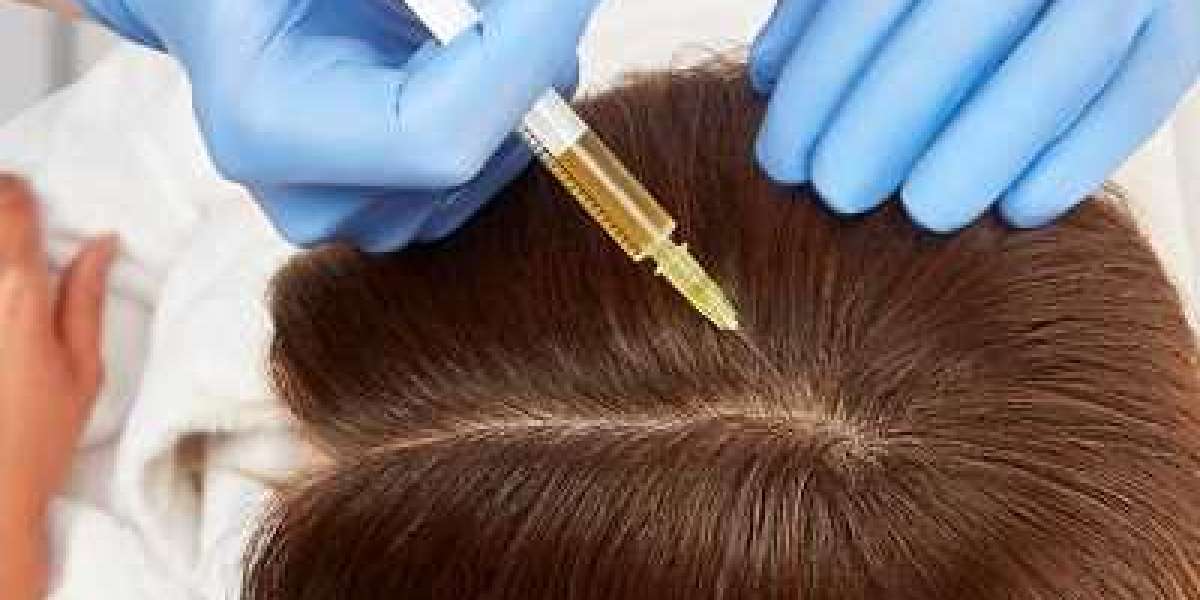Platelet-Rich Plasma (PRP) therapy in Islamabad has become a popular treatment for hair loss, with many individuals reporting positive results in terms of hair density and regrowth. PRP works by using the patient's own blood platelets to stimulate hair follicles and encourage new hair growth. However, while many people see success with PRP, it is not always effective for everyone. This blog explores the potential reasons why PRP treatment might fail for some individuals.
Understanding PRP Hair Therapy:
Before diving into the causes of PRP failure, it's important to understand how the treatment works. During PRP therapy, a small amount of blood is drawn from the patient and placed in a centrifuge, which separates the platelets from the other blood components. These platelets are rich in growth factors that help stimulate healing and promote hair growth when injected into the scalp.
PRP therapy aims to reactivate dormant hair follicles, improve blood circulation in the scalp, and encourage hair growth, especially for individuals experiencing androgenetic alopecia (pattern baldness) or thinning hair.
Common Causes of PRP Treatment Failure:
1. Advanced Stage of Hair Loss:
PRP therapy is more effective for individuals in the early stages of hair loss. If a person has lost a significant amount of hair and the follicles have already become inactive or scarred, PRP may not be able to reactivate them. Hair follicles that have been dormant for an extended period or are no longer viable may not respond to PRP treatment. As a result, those in the advanced stages of hair loss may see little to no benefit from the therapy.
Solution: Early intervention is key. Individuals who seek PRP treatment during the early stages of hair thinning are more likely to experience positive outcomes.
2. Underlying Medical Conditions:
Certain medical conditions can prevent PRP therapy from being effective. Autoimmune disorders like alopecia areata, in which the immune system attacks hair follicles, may not respond well to PRP. Similarly, other scalp conditions such as dermatitis or psoriasis can hinder the success of the treatment. Additionally, individuals with chronic health issues such as diabetes, severe anemia, or clotting disorders may also experience reduced results, as these conditions affect the body’s natural healing and regeneration processes.
Solution: A thorough medical evaluation before starting PRP therapy is essential. Treating underlying conditions first or addressing scalp health issues can improve the chances of success.
3. Poor Lifestyle and Nutritional Deficiencies:
For hair growth to occur, hair follicles need proper nutrition, oxygen, and overall scalp health. Poor lifestyle choices, such as an unhealthy diet, smoking, excessive alcohol consumption, and high levels of stress, can negatively affect the body’s ability to repair and regenerate hair follicles. Nutritional deficiencies, particularly in vitamins and minerals like biotin, zinc, and iron, can also limit the success of PRP treatment.
Solution: Maintaining a healthy lifestyle, reducing stress, and ensuring proper nutrition can support PRP’s effectiveness. Supplementing the diet with essential vitamins and minerals can enhance overall hair health.
4. Inconsistent or Insufficient Treatment Sessions:
PRP is not a one-time treatment. Multiple sessions are often required to achieve noticeable results, with most people needing three to four treatments spaced four to six weeks apart. Additionally, maintenance treatments every six to twelve months are often necessary to sustain results. Some individuals may give up on the treatment after only one or two sessions, leading to unsatisfactory results.
Solution: It’s important to follow through with the recommended number of sessions and maintain regular follow-up treatments as advised by the practitioner. Consistency is key to achieving and maintaining long-term results.
5. Inexperienced or Unqualified Practitioners:
The success of PRP therapy also depends on the skill and experience of the practitioner performing the procedure. If the PRP solution is not prepared or injected correctly, or if improper injection techniques are used, the treatment may fail to deliver the desired results. Additionally, not all PRP formulations are the same; the concentration of platelets in the plasma can vary, and using a solution with too few growth factors may reduce the treatment's effectiveness.
Solution: Choose a qualified and experienced practitioner who specializes in PRP therapy for hair restoration. Make sure the clinic follows proper protocols for preparing and administering PRP injections.
6. Unrealistic Expectations:
PRP therapy can enhance hair thickness, promote regrowth, and improve hair quality, but it is not a miracle cure for hair loss. Some individuals may expect immediate and dramatic results, which can lead to disappointment. In reality, PRP results can take several months to become noticeable, and the degree of improvement can vary based on individual factors such as age, genetics, and the cause of hair loss.
Solution: Setting realistic expectations before starting treatment is essential. Discussing anticipated results with your practitioner can help you understand what PRP can and cannot achieve.
How to Maximize PRP Success:
To improve the chances of a successful PRP treatment, patients should:
- Seek treatment early: Address hair loss in its early stages for the best outcomes.
- Choose a qualified professional: Ensure the clinic or practitioner is experienced in performing PRP therapy for hair restoration.
- Maintain consistency: Follow through with all recommended treatment sessions and stay committed to the maintenance schedule.
- Address lifestyle factors: Adopt a healthy diet, reduce stress, and avoid harmful habits like smoking.
- Treat underlying conditions: Work with your doctor to address any scalp conditions or medical issues that could interfere with hair growth.
Conclusion:
While PRP therapy can be highly effective for treating hair loss, it is not a guaranteed solution for everyone. The success of PRP depends on various factors, including the stage of hair loss, underlying health conditions, lifestyle choices, and the quality of the treatment. By addressing these factors and working with a qualified professional, patients can increase their chances of experiencing successful hair restoration results with PRP therapy.
For more information visit Dynamic Clinic PK








